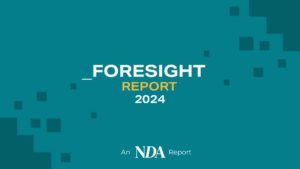By Margaret Kendrick, Senior Digital Account Director at UM International
With the recent investment by Goldman Sachs’s into GumGum contextual ad analysis, is this a sign that contextual targeting is becoming the new fashionable way to reach audiences online?
Contextual targeting and ad analysis allows brands to reach users in relevant environments, where the viewer can essentially be anonymous. For example, if a brand selling jewellery wanted to target someone getting married, they would align their ads with content about weddings. This could be done using video targeting; showing an ad for jewellery before a ‘how-to design your wedding’ guide on YouTube.
The brand could also use native advertising, where sponsored ads are designed to look like the native content on a site. For example, having an ad about jewellery alongside an article about wedding outfits is likely to resonate well with a user. This form of advertising assumes that whoever is viewing the ads will be more interested in them, simply based on the content they are consuming.
This form of contextual targeting is not new; it has been used by advertisers for a long time. So why is it once again becoming more and more popular to reach online audiences? To understand this, it is important to first understand why it previously became an unfavoured targeting strategy.
Firstly, contextual targeting can be restricting, as impression volumes may be limited if using keyword targeting, especially for more niche brands. For example, American football in the UK.
Secondly, in recent years it became easier for companies to collect data on an individual’s online behavior, with multiple companies offering high quality data on desired audiences: such as high net worth individuals, parents, house movers etc. As a result, programmatic ad tech tools and platforms were adopted to target and retarget users. These platforms were adopted on a vast scale, with multiple data sources now available for brands to reach consumers.
These two reasons combined resulted in behavioral targeting becoming very popular and often used instead of contextual targeting.
However, despite the rise in data-led targeting, the media landscape over the past few years has been hit with several changes affecting how brands were able to target people. This included the adoption of GDPR in May 2018, which restricts the use of data online without user consent. This resulted in many brands becoming nervous about using data for their advertising. In addition to this, we are now seeing Google and Apple, two of the biggest players in the media advertising market, moving towards cookie removal. Consequently, data-led targeting has become a lot more limiting for advertisers.
This has resulted in an opportunity in the media market for contextual targeting to resurface as a key player. Developments in technology, such as the rise in AI and algorithm technology, has resulted in contextual targeting becoming much more appealing to brands who want to target audiences online. It has also removed some of restrictions highlighted above, caused by keyword targeting, increasing opportunities to drive more scale and drive better efficiencies.
Development AI technology has meant that contextual targeting is no longer about just the keywords on the page. It is about understanding the context of what is written on the page, just as much as the keywords themselves. AI technology can scan pictures, site URLs and the written sentiment of an article. Highlighting that using keyword targeting alone is not enough to deliver a seamless contextual advertisement. AI and algorithm technology allows for better understanding of the page content. Not just for finding new placements for brand ads, but also in understanding the meaning of the content and pages.
In addition to this, research shows that brand alignment is becoming vital for consumers when they are online. IAS also found that 72% of consumers say that contextual relevance is important for ads, with 81% of UK consumers preferring to see online ads that match the content they are viewing.
Furthermore, the IAS study shows 65% of British consumers will have a more favorable view of a brand based on what the ad is viewed against. This shows that although data lead targeting does drive results, consumers prefer to see brands in relevant environments and, with brand perception so important to many companies, this really supports the rise of contextual targeting.
This has all contributed to the changing landscape for contextual targeting, and has fueled the high level of investment in the companies that have been working in this space.
Companies such as GumGum, who will use the investment from Goldman Sachs Growth to make its proprietary contextual API and contextual powered Display, Native, Video (OTT & Web) products more broadly available. The company will also expand and accelerate investments in key international markets.
Contextual targeting is set to get an upgrade too. According to GumGum CTO, Ken Weiner, contextual “isn’t just about looking for simple keywords on a page anymore – there’s a lot more on offer today, and it’s getting more and more sophisticated.”
Publishers such as The Washington Post, and technology providers like video ad platform Unruly and DoubleVerify, are also investing in contextual technology.
One of the main motivators behind DoubleVerify’s acquisition of Finnish contextual startup Leiki, for example, was based on the prediction that “contextual is going to be one of the next big things when it comes to effective online ad buying,” said Roy Rosenfeld, SVP of product development at DoubleVerify.
This huge investment, along with consumers becoming much more knowledgeable about the ads they are seeing online, has resulted in a new wave of contextual targeting, one that will continue to develop as investment in the technology continues.









